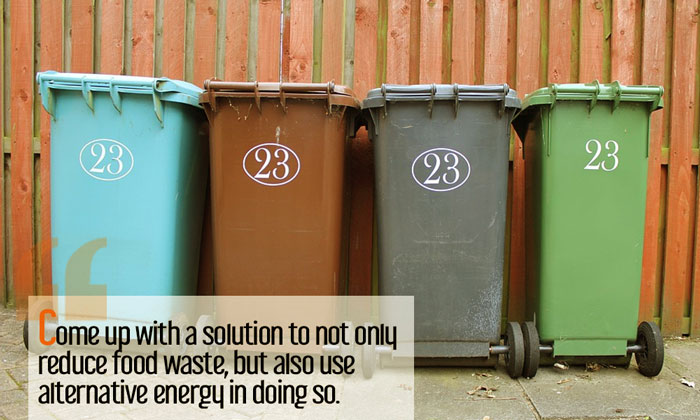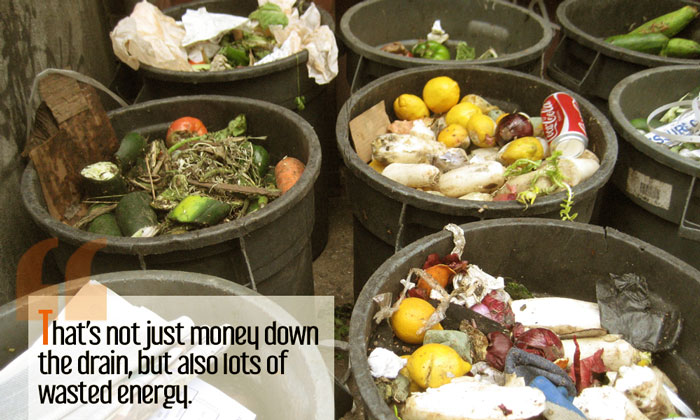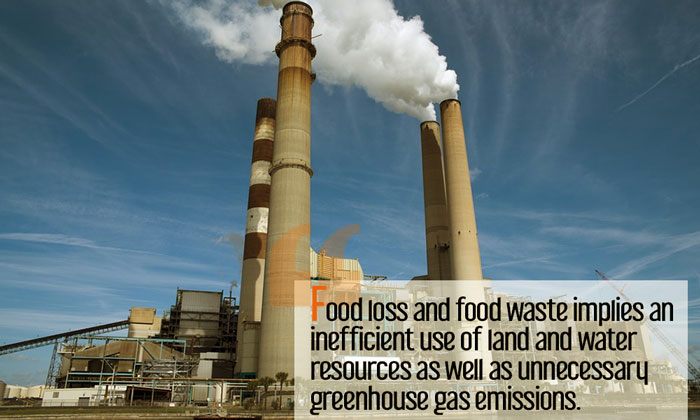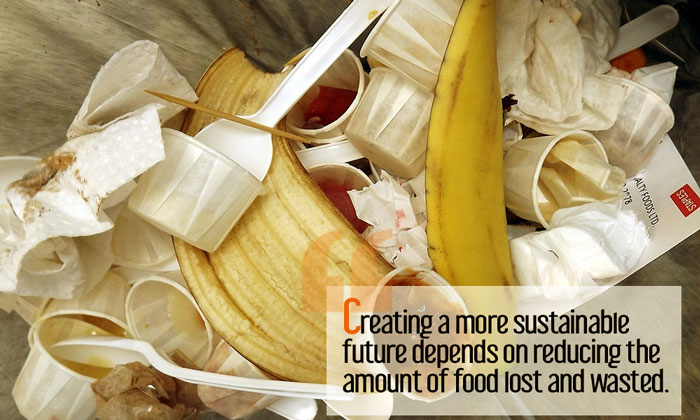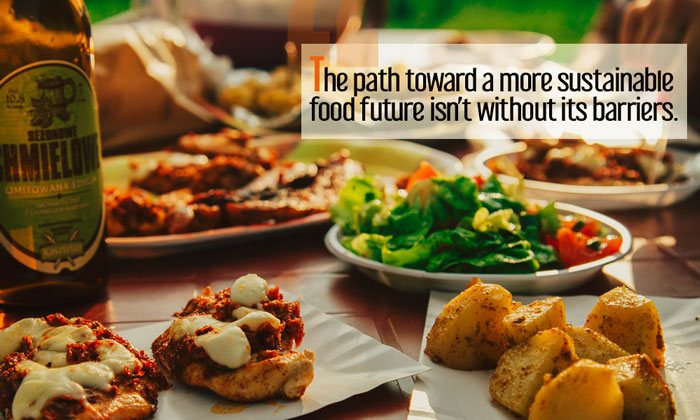Eating forward: Taking steps to combat the food waste problem
- Like
- Digg
- Del
- Tumblr
- VKontakte
- Buffer
- Love This
- Odnoklassniki
- Meneame
- Blogger
- Amazon
- Yahoo Mail
- Gmail
- AOL
- Newsvine
- HackerNews
- Evernote
- MySpace
- Mail.ru
- Viadeo
- Line
- Comments
- Yummly
- SMS
- Viber
- Telegram
- Subscribe
- Skype
- Facebook Messenger
- Kakao
- LiveJournal
- Yammer
- Edgar
- Fintel
- Mix
- Instapaper
- Copy Link
Posted: 20 July 2017 | Mischka Wolfert | No comments yet
Mischka Wolfert tackles the issue of food waste, suggesting that while progress has been made, there is still a long way to go…


The food waste crisis has been around for as long as we started selling food. Numerous studies have shown that an alarming amount of food is lost and wasted every year all over the world, at every phase of the food cycle, or its journey from production and packaging to purchase, consumption and disposal.
At the production level, for example, some food waste occurs as a result of food not meeting product specifications, overproduction to meet seasonal demands, and cancelled orders due to changes in market demand.
The U.N. Food and Agriculture Organisation (FAO) estimates that, based on weight, 32 percent of all food produced in the world was lost or wasted in 2009. Calorie-wise, this translates to a global food loss of 24 percent. Put simply, 1 in 4 calories intended for human consumption is wasted.
Foodways and food waste
Why is so much food heading straight to landfills? Is it simply a matter of overproduction and overstocking? Are retailers simply catering to consumers’ need for a variety of food options? Or perhaps consumers just keep on forgetting about use-by dates?
“Let’s just give the food to the needy,” is an answer usually given in response to the issue.
Redirecting food from landfills to the hands of those who need it is one way to address the problem, but it doesn’t totally solve it. When we know we can simply hand over the unconsumed food items, we wouldn’t change a thing about our foodways.
And this is where a majority of food waste can be attributed to: consumer behaviour. As reported in New Food Magazine, researchers from Europe and the United States recently examined how consumers waste food before, during, and after purchase and identified a psychological framework explaining food waste behaviour.
By doing so, the researchers were able to get a deeper understanding of why food waste occurs at the consumer level and propose strategies to encourage a change in consumer practices and attitudes toward food.
One of the key findings from that research was that because of consumer demand for a variety of food, even produce not in season and not grown locally, there is a higher incidence of spoilage. The longer produce sits in the food supply chain because of transport and handling, the higher its chances of eventually heading to the landfill.
For this and the other reasons behind consumer food waste, the researchers suggested education campaigns to raise awareness about the seasonality of produce, standardisation of sell-by, use-by and best before dates, and communication campaigns to help consumers understand that wasting food is culturally unacceptable.
Consumer behaviour is just one of the factors that affect the generation of food waste. Several organisations, research initiatives, and campaign groups have already analysed how food is wasted at every stage of the food cycle, and here we’ll present their key findings and proposed solutions to combat the food waste crisis.
Economic and environmental implications
Food loss and food waste have many negative impacts on the economy and the environment. The FAO describes food loss as the “unintended result of an agricultural process or technical limitation in storage, infrastructure, packaging or marketing.” It refers to the food that spills, spoils, incurs an abnormal reduction in quality such as bruising or wilting, or otherwise gets lost before it reaches the consumer.”
Food waste, meanwhile, is “the result of negligence or a conscious decision to throw food away.” It refers to good-quality food perfectly fit for human consumption “but that does not get consumed because it is discarded—either before or after it spoils.”
Both represent a wasted economic investment that can increase the expenses of consumers and reduce the incomes of farmers. In its paper “Reducing Food Loss and Waste,” the World Resources Institute (WRI) states that when you reduce food loss and waste by reducing post-harvest losses, you can increase the amount of food that farmers can use for their own consumption.
As for the environmental impact, food loss and food waste implies an inefficient use of land and water resources as well as unnecessary greenhouse has emissions that can result in the eventual loss of natural ecosystems. The WRI states that a reduction in food loss and waste means avoiding further agricultural expansion into the natural terrestrial ecosystems remaining on the planet. It also relieves the pressure placed on already-overstained fisheries.
Project: Food recovery
According to the U.S. Environmental Protection Agency, organic materials such as food, yard trimmings, and paper were the largest component of municipal solid waste generated in 2014. Food and yard trimmings accounted for 28.2 percent, followed by paper and paperboard with more than 26 percent.
Now, if all that wasted food were recovered and used to feed people, it would be able to provide food for more than 80 percent of the U.S. population. This is according to a study conducted by researchers led by Roni Neff of the Johns Hopkins University.
One project has been taking steps to do something like that. Glean Kentucky, which was founded in 2010, aims to save food that would otherwise be sent to the landfill. Gleaning is a traditional practice of picking produce from the parts of fields that farmers intentionally leave for those who need it.
Glean Kentucky’s method of gleaning is more modernised: volunteers pick up fruits, vegetables and other produce from farms, orchards or gardens that don’t get sent to markets and grocery stores. They then redistribute the unwanted produce to food pantries and other advocacy groups that fight hunger. The project has recovered and redistributed more than a million pounds of produce since its founding.
“There’s an enormous amount of food that is, for whatever reason, not able to be sold,” says Stephanie Wooten, the project’s executive director. “It doesn’t meet certain standards of a grocery store or a farmers market or there isn’t labour to harvest it or package it.”
Wooten says that whatever the reason may be, “We see a lot of food that would otherwise be thrown in a landfill if we weren’t able to glean it.”
According to the WRI, diverting food loss and waste from landfills would prevent the emission of methane, which is produced in the process of food breakdown. This would also reduce the environmental impact of greenhouse gases generated in food production.
Food waste: Facts and figures
The U.S. Department of Agriculture estimates that Americans throw out nearly 27 percent of the food they buy. That’s not just money down the drain, but also lots of wasted energy.
A waste of energy
A recent study on food production in the United States found that around 1.4 billion barrels of oil are used each year for growing, packaging, preserving and transporting food. U.S. food production accounts for an estimated 8-16 percent of the country’s total energy consumption. Adding up the figures, the researchers estimate that around 2 percent of the yearly energy usage of the United States ends up in the dumpster.
The researchers believe that if those figures are reduced, the United States would also be able to decrease its greenhouse gas emissions and do its part in slowing down global warming.
The WRI also echoes this, saying that better utilisation of food already grown would reduce the need to use energy for the production, processing, transport and storage of food.
What’s good to know is that donation of food (that would have gone to waste) to food banks is being practised in many parts of the globe, not just in the United States. There have also been efforts to divert unavoidable food waste away from landfills toward other uses with more value, such as waste-to-energy, composting and animal feed.
Sector waste
In 2013 the Food Waste Reduction Alliance published a report on the food waste generated by food manufacturers, wholesalers and supermarket retailers in the United States, showing how much of the food waste from these sectors were donated or disposed of in 2011.
The manufacturing sector generated 44.3 billion pounds of food waste. Of that quantity, 2.4 billion pounds were disposed and 700 million pounds were donated; a total of 94.6 percent of the waste was diverted from landfills toward higher uses including donation.
Meanwhile, the retail and wholesale sector generated 3.8 billion pounds, but only diverted 55.6 percent of it to uses with more value. Of that waste, 1.7 billion pounds were disposed and 670 million pounds were donated.
Bad for business
Food waste is also a problem in the Australian hospitality industry, where wasted produce is among the top three reasons for revenue loss among businesses, the other two being increased competition and changed culinary habits and attitudes.
Technology like hospitality point of sale systems can help restaurants and cafes know which food items sell and which don’t, allowing them to determine how much ingredients to order from suppliers. This can help restaurateurs avoid wasting food and losing revenue.
Intelligent POS systems are just one of the ways tech can help reduce the amount of food waste in businesses. Let’s take a look at other technologies currently being used to cut down on food waste.
More tech, less food waste
One of the supermarket chains in the United States has come up with a solution to not only reduce its food waste, but also use alternative energy in doing so. Kroger Co. subsidiary Ralphs makes use of technology to transform its organic waste (mostly food unable to be donated or left unsold, like stale bread and mouldy chicken) into clean electricity.
The company’s anaerobic digester system is made up of a massive grinder where waste is pulverised and a pulping machine that filters out inorganic materials and mixes the remaining waste with hot wastewater. The mulch is then transferred into a staging tank, then into a silo that functions as the system’s stomach.
The oxygen-less silo creates the perfect conditions for bacteria to break down the liquid waste, converting it into methane, which then floats to the top of the tank and siphoned out to provide energy to three turbine engines. Kroger says that the facility generates 13 million kilowatt-hours of electricity every year, enough to power more than 2,000 homes in California.
The excess water from the system is pumped out, purified, and sent into the industrial sewer, while the sludge left over from the digestion process is now an organic fertiliser that can be used to cover nearly 8,000 acres of soil for growing food.
Other tech innovations have also been developed to help households reduce food waste. There are now smart fridges that have built-in cameras so owners can check if there’s still a need to buy milk or not, helping them avoid over-buying food.
Scientists are also at work developing tech aimed at prolonging the shelf life of fresh produce. The technology involves spraying raw fruits and vegetables with an electrically charged solution, which doesn’t affect the taste and appearance of the food. Developed at the University of the West of England, the system could significantly reduce food waste and even help address world hunger.
Startup Hazel Technologies is also aiming to improve the shelf life of produce. Hazel Technologies’ product FruitBrite works to block ageing hormones in produce such as apples, cucumbers, leafy greens and tomatoes. Another product, BerryBrite, releases essential oil-derived vapour to reduce fungus and disease.
Apps and software such as LeanPath, Pantry, Fair Food Forager and Last Minute Sotto Casa are also being used in raising awareness about food sustainability and reducing food waste.
Moving toward a sustainable food future
Creating a more sustainable future depends on reducing the amount of food lost and wasted. The steps that have been taken toward this are commendable, but more needs to be done on a global scale, and by everyone involved in the food cycle.
“All actors in the food value chain need to be involved if food loss and waste rates are to be significantly curtailed,” the WRI notes. “Farmers, agribusiness firms, and consumers all have a role to play.”
In its paper, the WRI provides strategies and recommendations to reduce food loss and waste that have been suggested by experts to be cost-effective and practical. These approaches could also be implemented quickly and achieve quick gains, and include the facilitation of food redistribution or donation, reducing portion sizes at food establishments and changing food date labels to make them easier to understand by consumers.
Here are the strategies presented by the WRI:
- Food redistribution at the production, manufacturing, and at the distribution and market stages
- Use of evaporative coolers to avoid food spoilage in areas without electricity or that have low-income farmers
- Use of plastic storage bags to protect produce and crops from pests
- Using small, airtight metal silos for storing harvested crops
- Reducing food date confusion through the implementation of food packaging policies
- Consumer awareness campaigns about reducing food waste
- Providing reduced portion sizes (at a lower price) in restaurants and other food service providers
However, these strategies cannot be implemented without target-based food loss and waste policies and the cooperation of all actors involved in the food cycle, from farmers and households to retailers and policymakers. Achieving a globally sustainable food future also requires changes in behaviour, technology, practices, and policies.
“No single individual or group can sufficiently tackle this problem alone; collaboration is needed,” the WRI notes.
Other groups have joined in, working together with governments, businesses and communities to reduce food loss and waste. UK-based WRAP is one such organisation that works to deliver practical solutions to address the problem. Its website provides valuable resources such as tips to help consumers prevent household food waste and information on food waste collection, among others.
In China, one anti-food-waste campaign started as a photo of an empty plate posted on Chinese social media platform Weibo. Xu Zhijun, the man behind “Operation Empty Plate,” says he began the campaign shortly after learning that the food wasted by students in restaurants and cafeterias could feed 10 million people a year. The campaign, which urges others to finish their food and stop food wastage, has received the support of the Chinese government.
Waste not, want not
The path toward a more sustainable food future isn’t without its barriers, such as transportation constraints, lack of proper storage space, food recycling and redistribution limitations, and lack of resources and policies. However, all of these can be addressed with collaboration, a greater social and cultural awareness about the impacts of food waste, and a firm resolve to end the food crisis once and for all.
References:
- http://www.wri.org/sites/default/files/reducing_food_loss_and_waste.pdf
- https://www.newfoodmagazine.com/news/41066/tackle-food-waste-crisis/
- https://www.newfoodmagazine.com/news/36908/reducing-food-waste-improving-food-safety/
- https://www.epa.gov/smm/advancing-sustainable-materials-management-facts-and-figures
- https://wfpl.org/farm-to-landfill-what-new-research-shows-us-about-food-waste/
- http://www.fao.org/save-food/resources/keyfindings/en/
- https://www.treehugger.com/green-food/us-wastes-2-percent-of-its-energy-on-uneaten-food.html
- https://impos.com.au/blog/australian-hospitality-survey-stats-2017/
- http://www.foodwastealliance.org/wp-content/uploads/2013/06/FWRA_BSR_Tier2_FINAL.pdf
- https://www.theguardian.com/business/2016/jul/14/tech-innovations-that-could-reduce-food-waste
- http://articles.latimes.com/2013/may/15/business/la-fi-ralphs-energy-20130516
- http://chicagoinno.streetwise.co/2017/03/07/hazel-technologies-raises-800k-for-their-food-waste-fighting-tech/
- http://www.leanpath.com/
- http://www.wri.org/publication/reducing-food-loss-and-waste
- http://www.wri.org/sites/default/files/reducing_food_loss_and_waste.pdf
- http://www.wrap.org.uk/category/materials-and-products/food
- http://www.bbc.com/news/world-asia-china-21711928



